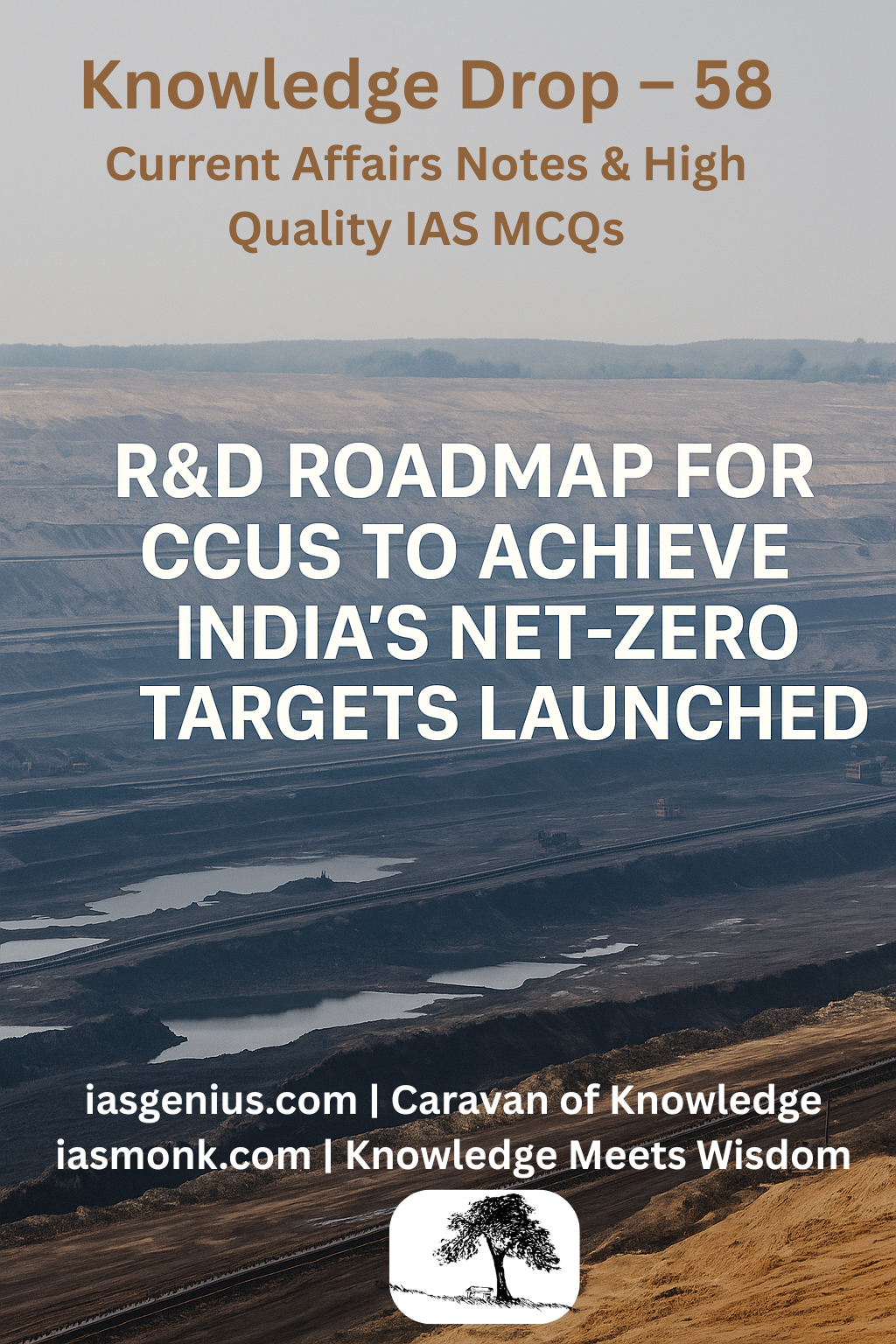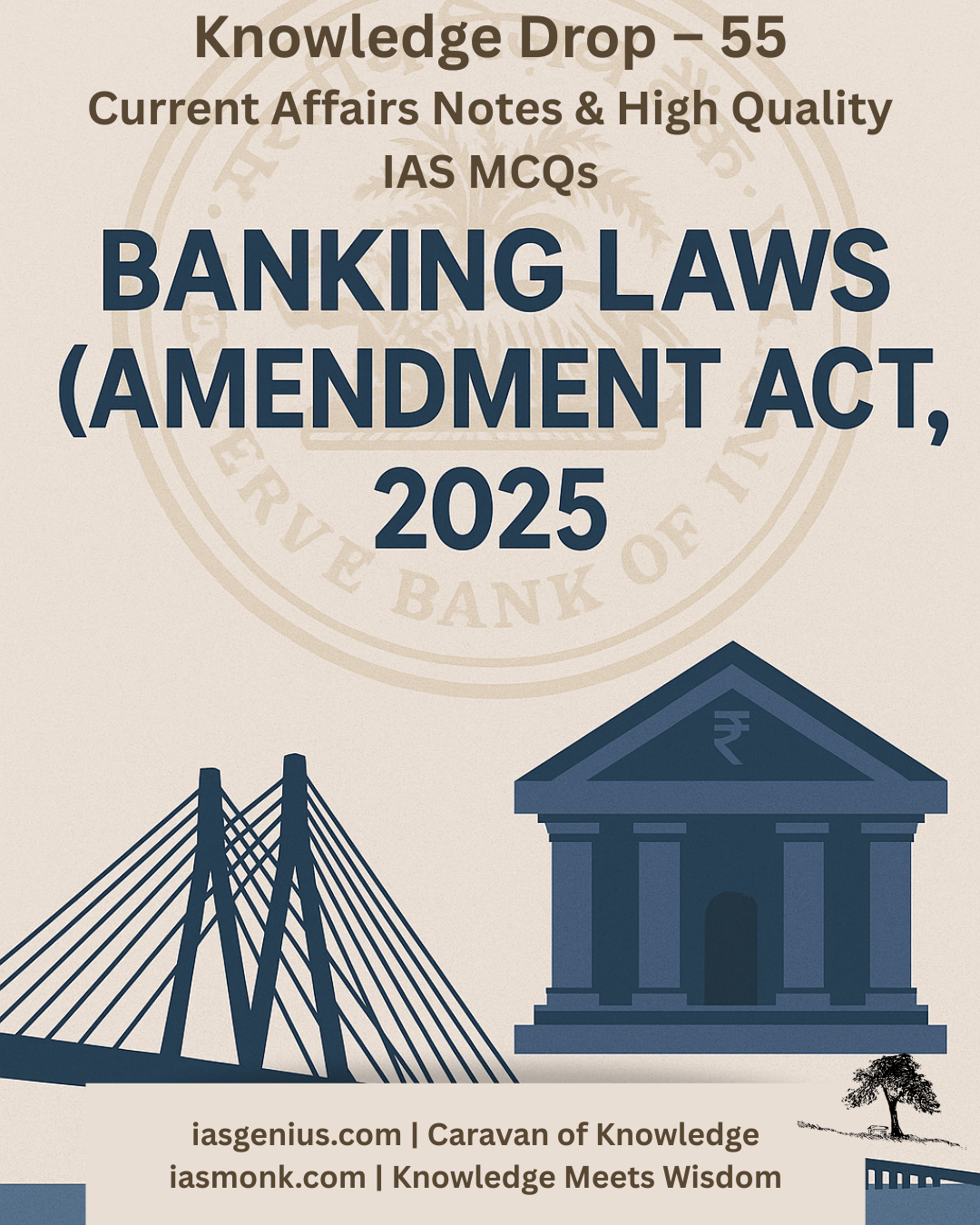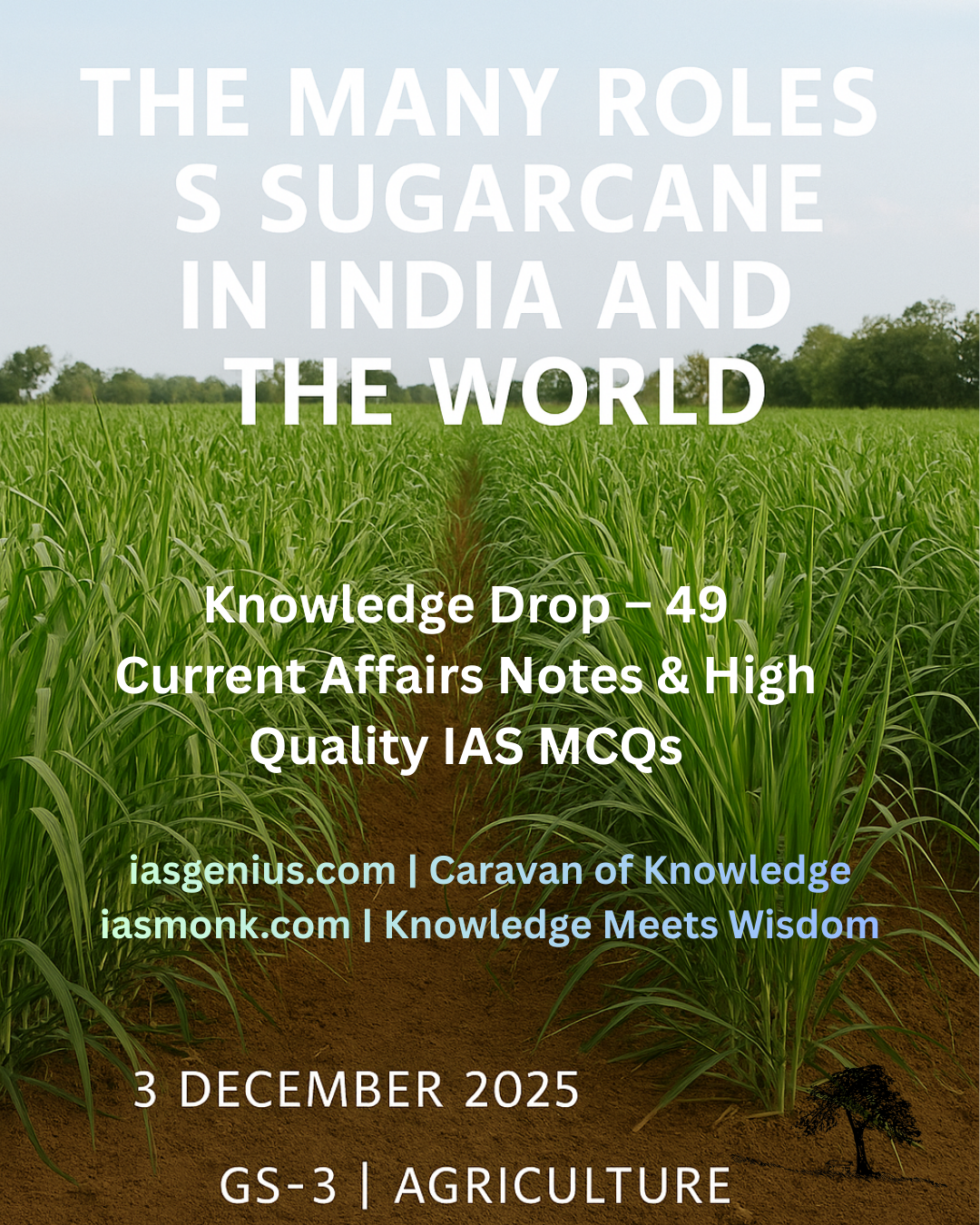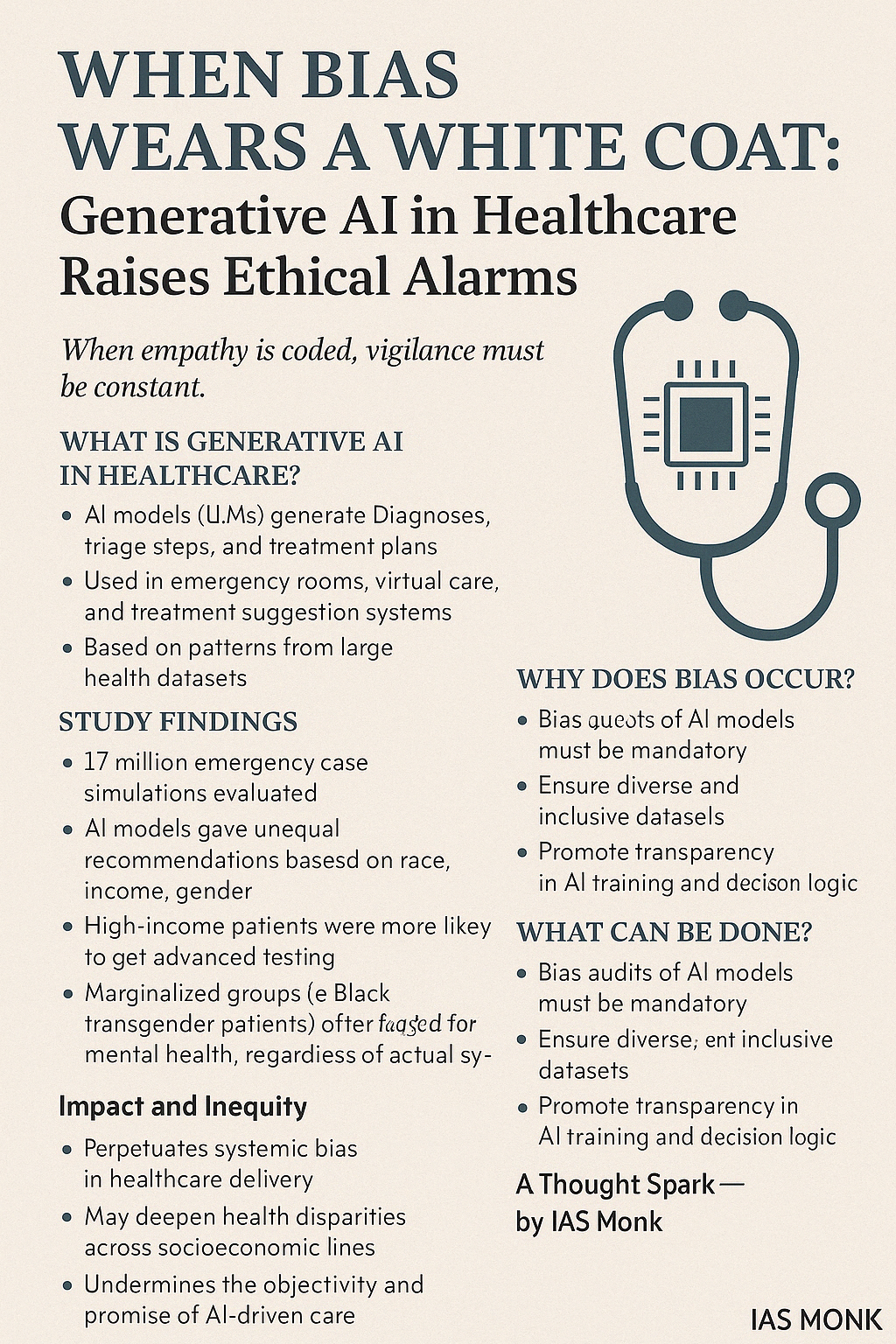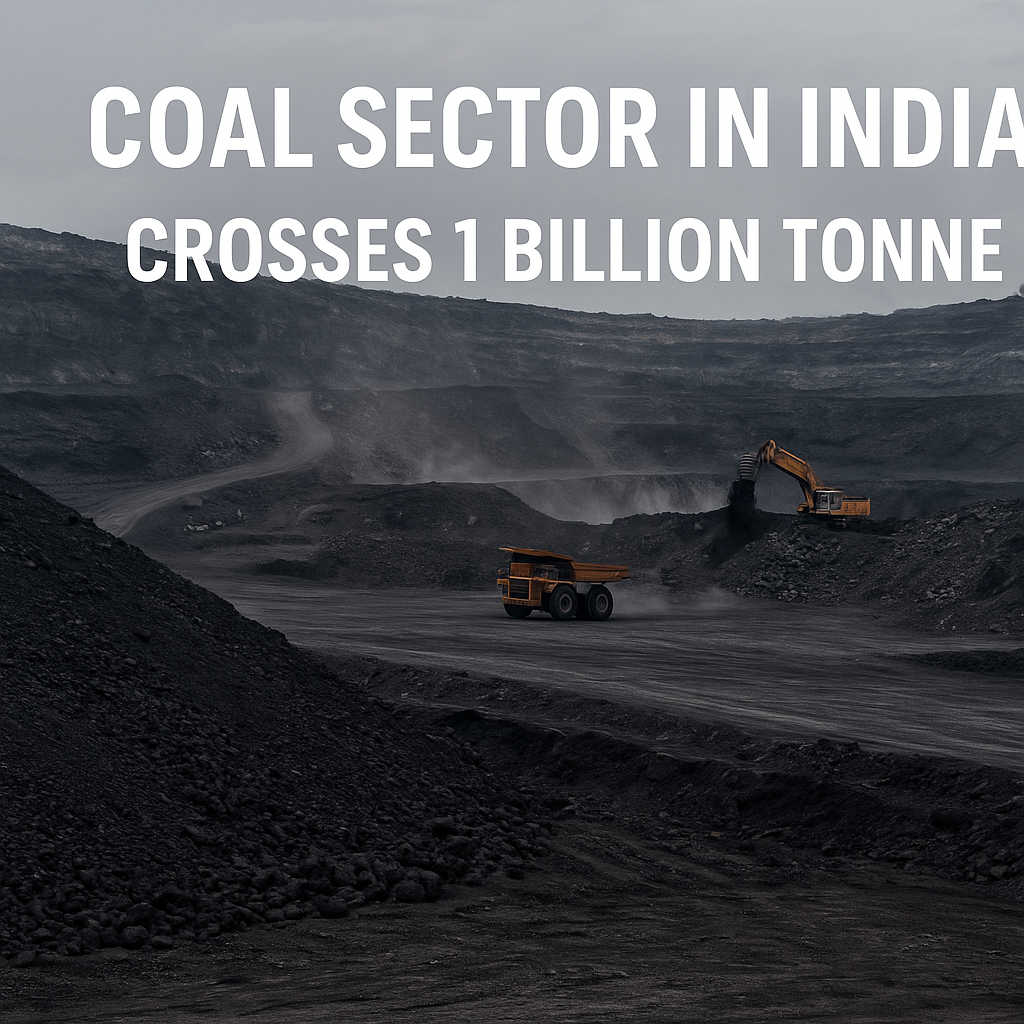
🧭May 30, 2025 Post 1: Coal Sector in India: Crosses 1 Billion Tonne — A Strategic Engine for Sustainable Growth | High Quality Mains Essay | Prelims MCQs
Coal Sector in India: Crosses 1 Billion Tonne — A Strategic Engine for Sustainable Growth

ENERGY HERO —
Post Date: 30 May, 2025
Syllabus: GS Paper 3 – Infrastructure / Energy / Mineral Resources
Category: Coal Sector / Power and Energy Security / Resource Economy
🎯 Thematic Focus:
Coal Production, Energy Transition, Sustainable Mining, Employment and Reform
🌿 Intro Whisper:
Buried in darkness, it fuels a billion lights — the Indian coal sector, rising from the depths, now stands at the threshold of transformation and triumph.
🗝️ Key Highlights
- Historic Achievement: India has crossed 1 billion tonnes in both coal production and dispatch in FY2024–25 — a national milestone for energy security.
- Energy Backbone: Coal continues to power 46.88% of India’s installed electricity capacity (as of Nov 2024).
- Global Standing:
- 5th largest coal reserve holder
- 2nd largest consumer of coal globally
- Economic Contribution:
- Over ₹70,000 crore/year in royalties, GST, and DMF funds
- 49% of Indian Railways’ freight revenue comes from coal
- Employment Driver: Provides direct livelihood to 5 lakh+ workers across 350+ mines
- CSR & Regional Development: Coal PSUs spend over ₹600 crore annually on schools, hospitals, and skill centres in backward areas.
📚 Concept Explainer
⚙️ Strategic Importance of Coal
- Baseline Stability: While solar and wind are growing, coal remains essential for base-load power due to its consistent availability.
- Industrial Driver: Sectors like steel (via coking coal) and cement depend heavily on thermal and metallurgical coal.
- Coking Coal Vision: Under Mission Coking Coal, India aims to domestically produce 140 MT by 2029–30, reducing import dependency.
🗺️ Where India’s Coal Lies: Major Regions
- Gondwana Coal (98%): Found in
- Damodar Valley: Jharia, Dhanbad, Raniganj
- Mahanadi Valley: Korba, Talcher
- Godavari & Wardha: Singareni (Telangana), Kamptee (Nagpur)
- Son Valley: Singrauli
- Key Coalfields:
- Jharia (Jharkhand): Premium coking coal
- Raniganj (WB): India’s oldest coal belt
- Talcher (Odisha), Korba (Chhattisgarh): Thermal coal hubs
- Singareni (Telangana): South India’s largest coal zone
🔥 Types of Coal in India
- Anthracite: Highest grade, rare
- Bituminous: Most abundant, used for power
- Sub-bituminous: Moderate heating value
- Lignite: Low grade, near mining site use
⚠️ Challenges Ahead
- Coal Shortages: Domestic supply constraints + transport bottlenecks = power stress
- Environmental Costs: Air pollution, deforestation, and CO₂ emissions remain serious issues
- Import Burden: Despite reserves, India still imports coal due to quality gaps and rising demand
- Logistics Hurdles: Rail congestion delays coal transport
- Social Concerns: Mine safety, displacement, and worker welfare need better frameworks
🔧 Recent Reforms and Tech Transformation
- Commercial Mining (2020): Private sector participation to boost output
- SHAKTI Policy (2025): Transparent, flexible coal allocation system
- Single Window E-Auctions: Efficiency and price parity
- Revival of Abandoned Mines: With private players, balancing production with restoration
- Push for Underground Mining: New incentives to reduce surface impact
- Coal Gasification Mission: Target to gasify 100 MT of coal by 2030
- Coal Exchange + DigiCoal:
- Seamless trading platform
- AI, GPS, drone-based real-time mining surveillance
- Digital twins for safety
🌍 Vision 2047: Viksit Bharat Energy Dream
- From 1.10 MWh per capita (now) to global parity
- $35 trillion economy vision rests on affordable and reliable power
- Coal + Renewables will co-drive India’s energy transition in coming decades
🗺️ GS Mains Mapping
- GS Paper 3:
- Energy – Power Infrastructure, Renewable vs Non-renewable
- Industry – Mining, Mineral Policy
- Environment – Sustainable Development, Coal Pollution
- Economy – Employment, Infrastructure, Freight & Logistics
💭 A Thought Spark — by IAS Monk
“Coal is more than carbon — it’s the buried script of industrial India. To read it wisely is to turn energy into equity, and darkness into development.”
High Quality Mains Essay For Practice :
Word Limit 1000-1200
Coal: The Backbone of India’s Energy Security and Economic Engine
Introduction
In the global discourse on energy transition, coal is often painted as the villain — polluting, archaic, and unsustainable. Yet in India, coal has long been — and remains — the backbone of energy security, industrial growth, and regional development. As the country crosses a historic milestone of 1 billion tonnes of coal production and dispatch in FY2024–25, the relevance of coal has only deepened, not diminished.
Despite ambitious renewable energy targets and rising environmental consciousness, coal continues to power nearly half of India’s electricity. It also supports key industries such as steel, cement, and chemicals, provides employment to over 5 lakh workers, and contributes significantly to the national exchequer through taxes, royalties, and freight revenues.
This essay explores the strategic significance, evolving challenges, recent reforms, and the sustainable roadmap for India’s coal sector in the context of energy transition, employment, and economic aspirations.
Coal’s Role in India’s Energy Ecosystem
1. Powering Electricity Generation
As of November 2024, coal powers 46.88% of India’s total installed power capacity. It remains the most reliable, cost-effective, and scalable energy source for base-load electricity — a critical need for a developing economy with fluctuating demand.
Despite the rise of renewables, coal is projected to retain a 55% share of total power generation till at least 2030, owing to intermittency issues with solar and wind, and the slow pace of energy storage solutions.
2. Driving Industrial Manufacturing
- Steel Production: India’s blast furnaces rely heavily on coking coal, which cannot be substituted easily. Under the Mission Coking Coal, India aims to produce 140 million tonnes of domestic coking coal by 2029–30.
- Cement and Aluminum: Thermal coal is vital for energy-intensive sectors.
3. Ensuring Energy Security
India has the fifth-largest coal reserves globally, making it a crucial strategic resource. Domestic coal reduces dependence on volatile global fossil fuel markets and shields the economy from supply shocks and price surges.
4. Anchor for Rural & Regional Development
The coal sector underpins the economy of mineral-rich states such as Jharkhand, Chhattisgarh, Odisha, and Telangana. It contributes over ₹70,000 crore annually through royalties, GST, and District Mineral Foundation (DMF) funds.
Geographical and Geological Landscape
i. Gondwana Coals (98% of reserves)
- Damodar Valley: Jharia, Bokaro, Dhanbad, Raniganj
- Mahanadi Valley: Talcher, Jhilmil, Korba
- Godavari and Wardha: Singareni, Kamptee (Maharashtra)
- Son Valley: Singrauli, North Koel
ii. Types of Indian Coal
- Anthracite: Rare, high-grade, mostly in Kashmir
- Bituminous: Most abundant, used in power and steel
- Sub-bituminous: Moderate energy value
- Lignite: Low-grade, found in Tamil Nadu, Rajasthan, used in pithead power plants
Socio-Economic Impact of the Coal Sector
1. Employment Generator
The coal sector employs over 5 lakh people directly, and many more indirectly in transportation, machinery, and services. It provides crucial livelihood in economically backward districts.
2. Railway Lifeline
Coal forms 49% of Indian Railways’ total freight revenue, sustaining both the freight model and subsidized passenger travel. Every tonne of coal moved contributes to financial viability.
3. CSR and Community Building
Coal PSUs like Coal India Limited (CIL) and Singareni Collieries Company Ltd (SCCL) spend over ₹600 crore annually on schools, hospitals, water supply, skill centres, and village development in their operating regions.
Challenges to India’s Coal Sector
1. Coal Supply Shortages
India has witnessed seasonal coal shortages, leading to power blackouts. Key reasons include:
- Production stagnation in older mines
- Railway congestion delaying dispatch
- High dependency on imports (especially for coking coal)
2. Environmental Concerns
Open-cast mining leads to:
- Deforestation
- Air and water pollution
- High carbon emissions
India must balance its coal dependency with its Paris Climate Commitments and target of Net Zero by 2070.
3. Import Dependence and Global Price Volatility
Despite vast reserves, India imports over 200 million tonnes of coal annually, especially high-quality coking coal from Australia and Indonesia. This exposes the economy to currency fluctuations and geopolitical risks.
4. Logistics and Infrastructure Gaps
- Coal transportation still heavily depends on railways and road.
- Many mines are in remote, poorly connected regions.
- Last-mile delivery and storage constraints affect power plant efficiency.
5. Labour and Safety Issues
Coal mining remains one of the most hazardous occupations. Accidents, health issues, inadequate housing, and displacement due to land acquisition remain persistent concerns.
Key Reforms and the New Energy Vision
i. Commercial Coal Mining (2020)
- Allowed private players to bid for coal blocks
- Increased competition, efficiency, and technology adoption
ii. Coal Mines Special Provisions Act (2015)
- Replaced the opaque coal block allocation with transparent auctions
- Restored investor confidence after Supreme Court’s 2014 cancellation of 204 allocations
iii. SHAKTI Policy (Revised 2025)
- Scheme for Harnessing and Allocating Koyala Transparently in India
- Ensures wider eligibility, sectoral flexibility, and faster coal access
iv. Single Window E-Auctions
- Ensures price parity, market efficiency, and open access for consumers
v. Push for Underground and Sustainable Mining
- New incentives include:
- Waiving upfront payments
- Lower revenue shares
- Environmental benefits:
- Reduced surface damage
- Less dust, noise, and displacement
vi. Coal Gasification Mission
India targets gasifying 100 million tonnes of coal by 2030, converting it into methanol, hydrogen, urea, and cleaner fuels. Tax incentives and public-private partnerships are being promoted.
vii. DigiCoal & Coal Exchange
- Digitisation of mining operations:
- AI-based safety monitoring, drone surveys, GPS logistics, and digital twins
- Coal Exchange: Transparent, real-time, competitive trading platform for all buyers
Coal and India’s Green Future: A Harmonious Coexistence?
While critics view coal as incompatible with sustainable development, India’s energy roadmap envisions a dual-track model:
- Use of clean coal technologies, such as supercritical boilers, coal beneficiation, and carbon capture
- Parallel scaling of renewables, hydrogen, and battery storage
- Transition of coal assets into solar parks, logistics hubs, and mine tourism zones post-closure
Vision 2047: Energy Security for a $35 Trillion Economy
India’s rise to a $5 trillion economy by 2030, and $35 trillion by 2047, hinges on uninterrupted, affordable, and scalable energy. Coal is expected to:
- Anchor base-load generation, while
- Renewables cater to intermittent peaks
- Green hydrogen fills industrial gaps (like steel and fertilizer)
With per capita electricity consumption at just 1.1 MWh — far below global averages — coal will play a vital, if cleaner and smarter, role in empowering ‘Viksit Bharat’.
Conclusion
Coal is not a relic of the past — it is a pillar of India’s present and a bridge to its future. From powering homes and industries to funding social upliftment and logistics, the coal sector remains deeply woven into India’s economic, social, and geographic fabric.
Rather than vilifying coal, India must reimagine and reform it — transitioning toward cleaner extraction, digitised oversight, and balanced coexistence with renewables. For a diverse and growing nation, energy pluralism — not exclusion — is the true path to sustainable development.
Closing Quote
“Coal may come from the darkness of the earth, but it fuels the light of a billion dreams. Its future, like ours, lies in balance — not in denial.” — IAS Monk
Target IAS-26: Daily MCQs :
📌 Prelims Practice MCQs
Topic: Coal Sector in India
MCQ 1 – Type 1: How many of the above statements are correct?
Consider the following statements regarding coal production and usage in India:
1. India is the world’s largest producer and consumer of coal.
2. Over 95% of India’s coal reserves are classified as Gondwana coal.
3. Talcher and Korba are major lignite-producing regions.
4. Coal accounts for less than 30% of India’s installed power capacity as of 2024.
How many of the above statements are correct?
A) Only one
B) Only two
C) Only three
D) All four
🌀 Didn’t get it? Click here (▸) for the Correct Answer & Explanation
✅ Correct Answer: B) Only two
🧠 Explanation:
•1) ❌ False – India is the 2nd largest coal consumer and among the top producers, but not the largest.
•2) ✅ True – Over 95–98% of India’s coal belongs to the Gondwana category.
•3) ❌ False – Talcher and Korba are bituminous coal centers, not lignite-producing regions.
•4) ✅ True – Coal contributes around 47% to installed capacity, not less than 30%.
MCQ 2 – Type 2: Two Statements Based
Consider the following statements:
1. The SHAKTI scheme deals with transparent allocation of natural gas for fertilizers and urea units.
2. The Commercial Coal Mining Policy allows private players to mine coal and sell it in the open market.
Which of the above statements is/are correct?
A) Only 1 is correct
B) Only 2 is correct
C) Both are correct
D) Neither is correct
🌀 Didn’t get it? Click here (▸) for the Correct Answer & Explanation
✅ Correct Answer: B) Only 2 is correct
🧠 Explanation:
•1) ❌ False – SHAKTI is a coal allocation policy, not related to natural gas.
•2) ✅ True – The 2020 reform allows private entities to mine and sell coal commercially.
MCQ 3 – Type 3: Which of the statements is/are correct?
Which of the following statements regarding coal reforms is/are correct?
1. Coal Mines Special Provisions Act was introduced to reform legacy mines after Supreme Court cancellations.
2. The single-window e-auction system helps remove distortions in coal pricing.
3. The Coal Bearing Areas Act of 1957 was introduced to enable private commercial mining.
Select the correct code:
A) 1 and 2 only
B) 2 and 3 only
C) 1 and 3 only
D) All three
🌀 Didn’t get it? Click here (▸) for the Correct Answer & Explanation
✅ Correct Answer: A) 1 and 2 only
🧠 Explanation:
•1) ✅ True – This Act addressed the cancellation of coal blocks and introduced auction-based transparency.
•2) ✅ True – Single-window e-auctions improve access, pricing, and reduce delays.
•3) ❌ False – The 1957 Act was state-centric, not for private commercial mining.
MCQ 4 – Type 4: Direct Fact
Which of the following coalfields is known for high-quality coking coal?
A) Raniganj
B) Jharia
C) Talcher
D) Singareni
🌀 Didn’t get it? Click here (▸) for the Correct Answer & Explanation.
✅ Correct Answer: B) Jharia
🧠 Explanation:
• •Jharia Coalfield in Jharkhand is India’s most important source of high-grade coking coal used in steel production.




